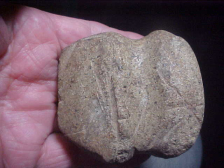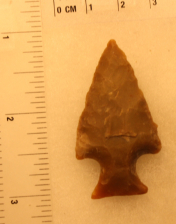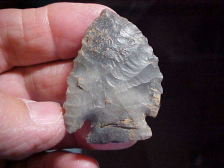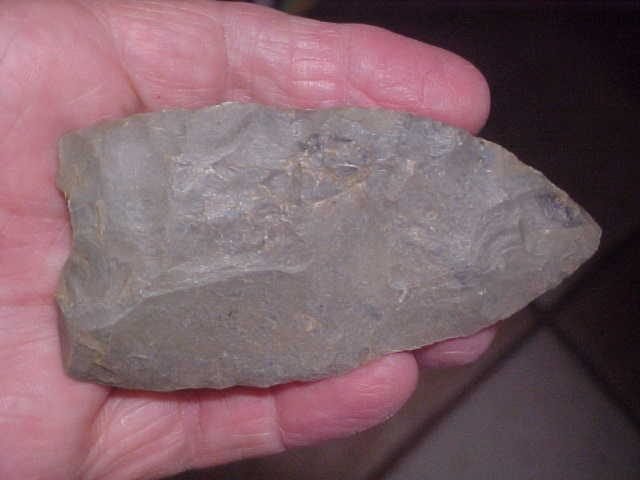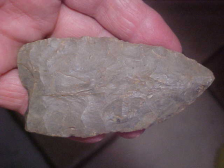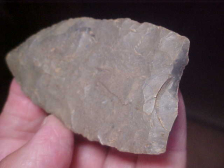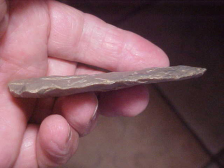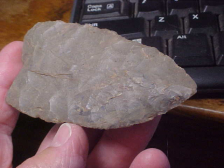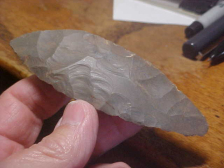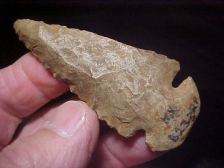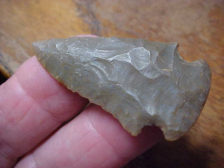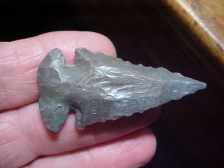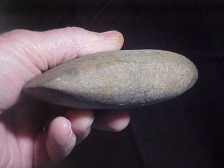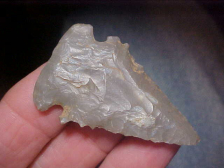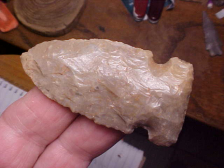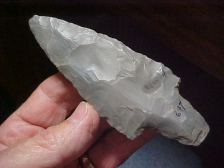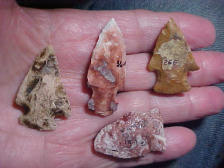Price:
$75.00
Status:
Available
One way to distinguish a point (or blade) made from a large flake (not a bifacial blade) is that there can be flat flakes on the base where the knapper was trying for maximum blade length--when he got to where there should be a nice basal edge, be it rounded, flat, or some sort of stem...and he ran out of flint to work, you get 'fracture planes', flat or angled spots. This Cobbs-type Knife has a classic example on one corner. There was no way to attack that flat corner without risking breaking the whole thing. If this was to later become a Lost Lake or Dovetail, the two most commonly made from Cobbs Knives, then the notching would have started well above that angled flake--as small bits of flint chipped away, that flat/ angled flake might have been more easily worked--removed in fashioning a thin basal edge. Note there is a later-made flake, far darker in color than the Early Archaic-made chipping; under a 10x loop it's so random of damage that I'd judge it to be old fame damage from the Warrick County, Indiana, field where the blade was found. Nothing about that darker edge shows it was deliberate, just a bit of fame damage. Length of the blade is slightly under 3&11/16" by a WIDE 1&7/8", but very thin, the single thickest spot near the base is only 3/8". Every detail is guaranteed real. Shipping is $6.00, checks or M.O>s are welcomed, but please note you can not pay with paypal on this store--Roy A.
Disclaimer: Seller assumes all responsibility for this listing





